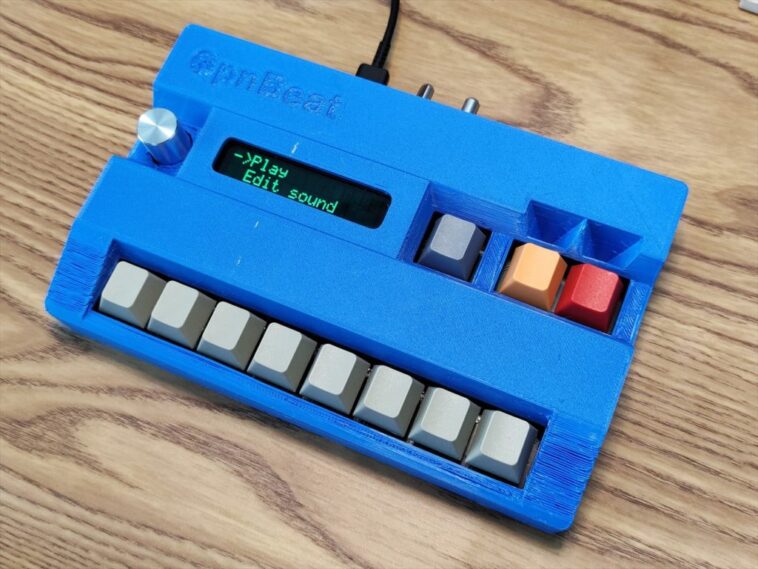
Most electronic music is created through either sampling or synthesizing sounds. A synthesizer generates sounds on demand according to the input parameters (like frequency and amplitude), while a sampler plays prerecorded sound clips — often with overlaid effects to alter the sound. Both are very versatile, but that means that they can be difficult to learn. OpnBeat is a DIY lo-fi sampler that promises to be easy for anyone to understand.
OpnBeat was designed by Hiro Akihabara to be as simple as possible to use. It is therefore fairly limited in capability. But OpnBeat still provides enough functionality to be useful and fun. It is a bit like an advanced Talkboy (the fictional Home Alone 2 device that became a real toy), because it lets users record short clips and then play them back. It can record and store eight different clips at any given time through a line-in jack or the built-in microphone, then can play those back when the user pushes the corresponding key. A sound edit mode lets the user cut and trim recorded clips. A metronome and “rhythm edit mode” help to make playback more musical.

Building an OpnBeat device requires a custom PCB. That PCB contains an Arduino Nano board, a 16×2 character LCD, key switches, potentiometers, rotary encoder, sound chips, and amplifier. The sounds chips are Nuvoton ISD1720SY ICs, which were designed specifically for voice recording and playback. Many of the components are SMDs (surface mount devices), so you will need some soldering skill to assemble the PCB. The enclosure is 3D printable.
If you’ve found yourself intimidated by the complex and expensive samplers on the consumer and professional market, then OpnBeat may be the more approachable alternative that you’ve been looking for.
The post OpnBeat is a DIY lo-fi sampler that anyone can learn to use appeared first on Arduino Blog.
Website: LINK


